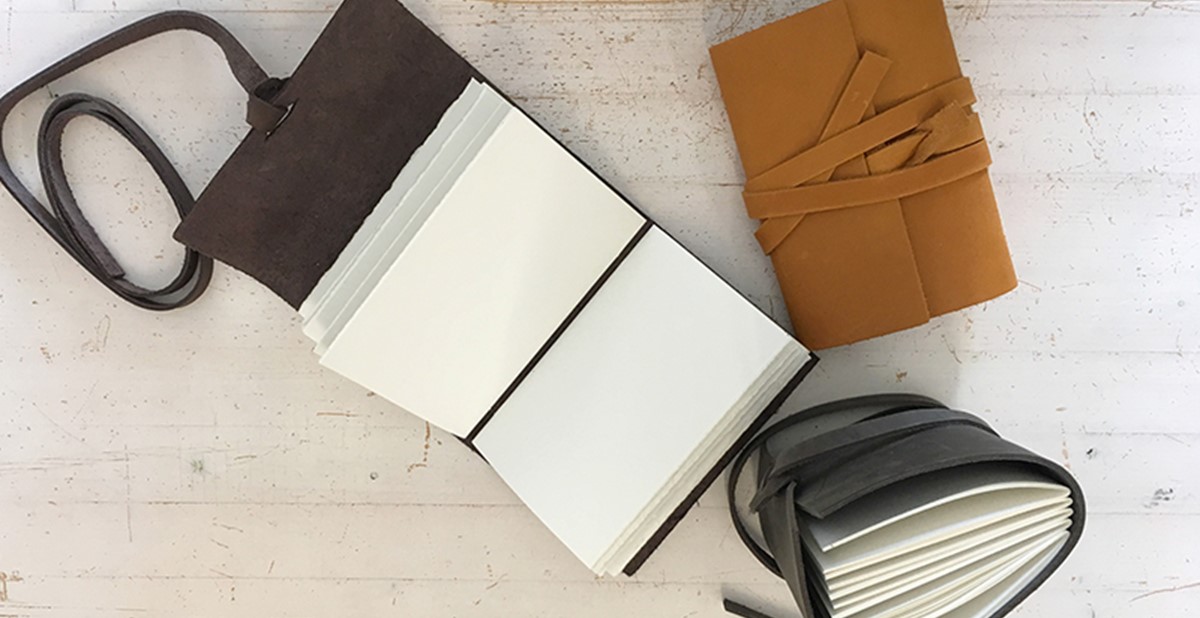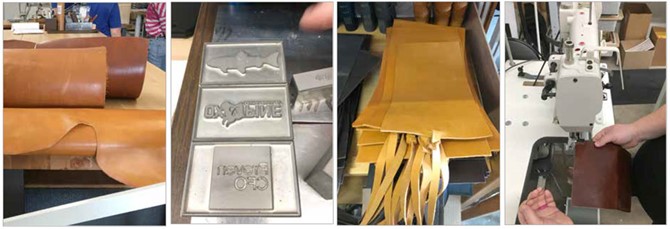Hide To Seek

The most unassuming spaces can be home to beautifully crafted goods, and the space occupied by supplier Ox & Pine (PPAI 725830) in a tiny business park in McKinney, Texas, is no exception.
“I started Ox & Pine because I have a passion for bookbinding and leatherworking,” says Stephanie Brown, owner and principal of the supplier recognized as PPAI’s 15,000 member when it joined the Association in late 2017. “After years of making books and working with leather, I decided it would be fun to sell some of my creations. From there it’s just grown, and I love to continue to learn my craft. We make everything by hand from raw materials--we cut down hides of leather and carefully craft each piece for a unique and beautiful gift.”
To produce leather, animal hides are tanned and finished in a variety of ways that produce a waxier, smoother feel, says Brown. “We love oil-tanned leather for the softness and signature ‘pull-up’ feature, where the leather will lighten in color in an area that’s folded and then darken again as it’s rubbed.”
Tanning is the process of treating a cowhide to produce leather. “Every tannery has different formulas and processes to produce their leathers (e.g. vegetable tanned, chrome tanned). The different tanning processes result in different looks and textures. Some leathers are dyed colors and others are left natural, producing the traditional undyed vegetable tanned leather [very light peach/tan in color],” Brown explains.
Leather comes in a variety of cuts from the animal, and Ox & Pine orders its leather in sides (literally half of a cowhide) and those will vary from 18 to 24 square feet depending on the size of the cow. “The hides don’t come in nice rectangular rolls like fabric—they’ll be irregularly shaped with holes, scars and brand marks,” Brown says.
Brown and an assistant, along with some consultants, work the leather into journals, luggage tags, cord organizers and, most recently, leather patches
on trucker hats and leather three-ring binders. “We continue to work on future products that we will offer soon,” she says.
Brown’s team is trained in both leatherworking and bookbinding techniques. “They’re really learning a trade and practicing it until they get it down well,” Brown says. “They learn about the tools and how to use them, and about all the materials. And when it comes to stamping in the personalization by hand, it takes knowing what gives the best result and a lot of practice.”
Leatherworking by hand is not without its challenges, says Brown. “Learning—and teaching—the personalization that we do all by hand is the biggest. It takes time and practice to learn the art, but we’ve been able to overcome this with extensive training manuals and one-on-one training with constant feedback.”
The ongoing training and learned expertise translate into bespoke items that are gaining a following. “Handmade leather goods usually have a long production time due to the detail involved, but we’ve been able to keep a short production time while providing the best leather goods.”
–––––––
Read on to learn more about leatherworking and bookbinding at Ox & Pine.

1 All products begin as sheets of treated cowhide; Brown works primarily with hides finished in black, brown, tan and red. There are a variety of colors available that they can source, but the main offerings are earthtones.
2 Sheets are cut to size by hand for journal bindings and ties, luggage tags, cord wraps, patches and more.
3 Brown uses equipment such as sewing machines and hot stamping machines, the latter of which requires setting lead type blocks by hand.
4 Items such as notebooks and tags are cut and finished in bulk, then customized on demand.
–––––––
About Ox & Pine
Founding date: November 2014
Principal: Stephanie Brown, founder/owner
Number of orders filled per month: Several hundred
Most popular item: Personalized luggage tags
–––––––
Jen Alexander is associate editor of PPB.

